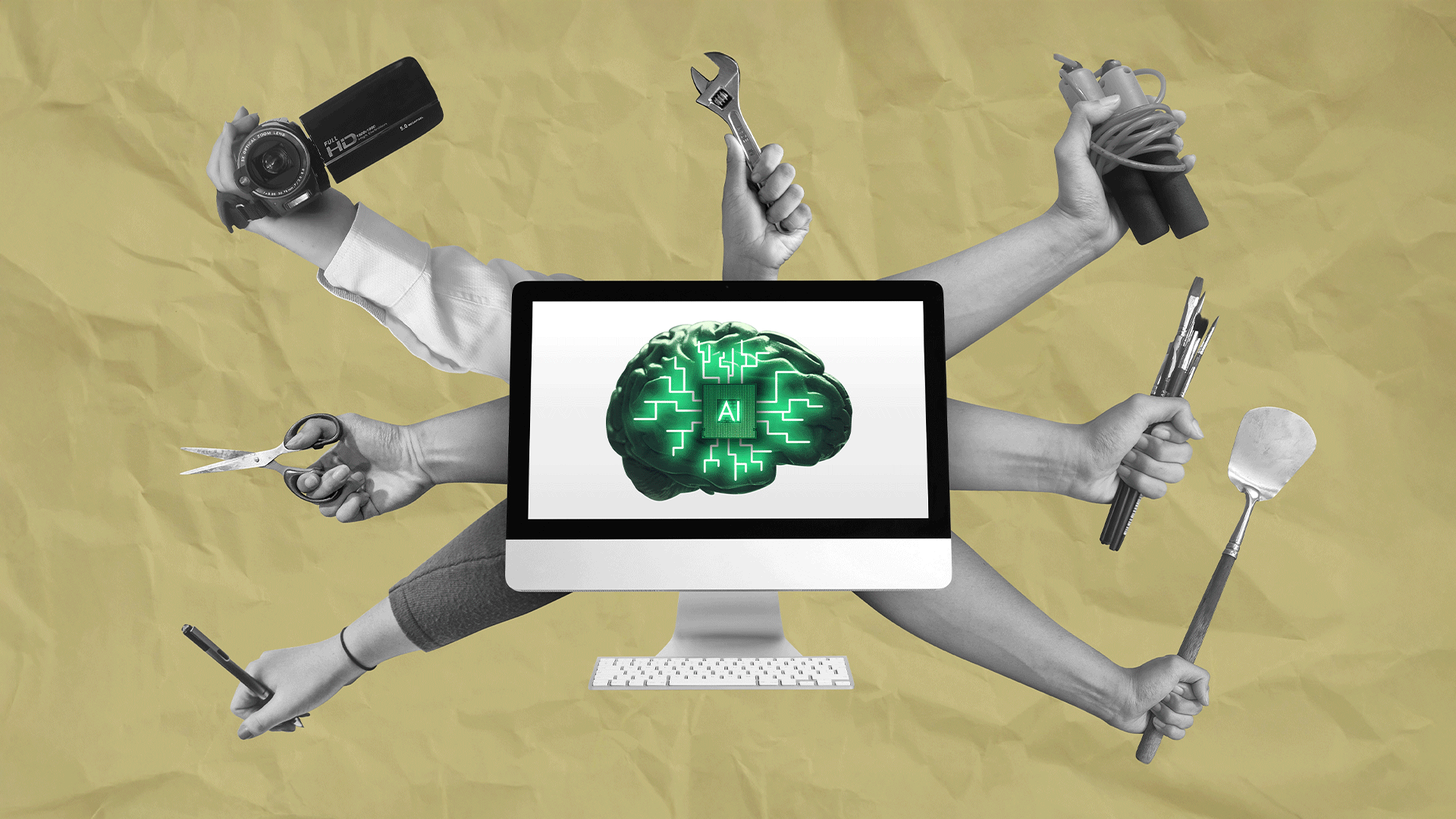Don't swim against the current: AI is a creative amplifier, not a threat

Categories
There’s been a lot of debate about AI in design—will it take our jobs, diminish creativity, or make human designers obsolete? From my experience, the reality is far from that. Instead of fighting against AI, I’ve embraced it as a tool to enhance, not replace my creativity.
Much like swimming with the current rather than against it, AI allows me to work faster, experiment more freely, and focus on bigger creative decisions rather than getting bogged down by repetitive tasks. However, as AI continues to evolve, it’s important to acknowledge ethical concerns—especially around how large language models and generative tools were trained. Designers need to be mindful of how they use AI-generated assets, ensuring they document sources of inspiration, respect copyrights, and follow best practices when integrating AI into their work.
This post is a look at how I’ve integrated AI into my design workflow to boost efficiency, spark new ideas, and push creative boundaries—without compromising on originality or ethical responsibility.
1. Content-Aware Tools in Photoshop for smart editing
Let AI handle the small fixes so I can focus on the big picture.
Photoshop’s Content-Aware Fill, Remove Tool, and Generative Fill have drastically reduced the time spent on cleanup work. Instead of manually retouching backgrounds or removing unwanted elements, I can let AI intelligently fill in gaps, saving hours of tedious work.
Example: When compositing multiple images for a campaign visual, I use Content-Aware Fill to remove distractions or extend backgrounds without painstaking manual cloning. This speeds up my workflow and lets me iterate more quickly.
2. Midjourney for scamping & rapid concept development
AI is a brainstorm partner, not a replacement for original ideas.
Midjourney has become a valuable tool for scamping and early ideation, helping me quickly visualize concepts before refining them into final designs. It’s perfect for generating mood boards, color explorations, and stylistic references to jumpstart projects.
Example: If I’m working on a branding project, I can generate quick concept directions in Midjourney to explore different visual styles. These are not final outputs, but they help shape discussions with clients and speed up the creative discovery phase.
Ethical Consideration: Since AI models are trained on vast datasets, I ensure my final designs are original and not directly derived from AI-generated content. Midjourney is a tool for rapid iteration, not a shortcut for creativity.
3. ChatGPT for refining copy, improving emails & generating better dummy text
Good design needs good messaging—AI helps fine-tune words, not write them for me.
Great design isn’t just visual—clear, impactful copy is just as important. I use ChatGPT to:
- Refine headlines and UX copy to make messaging clearer and more engaging.
- Generate realistic dummy text for mockups and concept presentations.
- Improve emails and client communications by making them more concise and professional.
Example 1: If I’m designing a landing page mockup, instead of using generic “Lorem Ipsum,” I use ChatGPT to generate industry-relevant placeholder text that feels more real to clients. This makes presentations more effective and helps shape the actual content strategy earlier in the process.
Example 2: When sending project updates or proposals, I can use ChatGPT to help structure my emails, ensuring they are clear, direct, and professional—especially when communicating complex ideas to non-designers.
Best Practice: AI-generated copy is a starting point, not the final draft. I always edit and refine it to match the brand’s tone, voice, and objectives.
4. AI as a collaborative partner, not a replacement
The best designs come from human intuition, guided by AI efficiency.
AI speeds up workflows, enhances creative exploration, and automates repetitive tasks, but it doesn’t replace strategic thinking, emotional intelligence, or storytelling—the core of great design.
However, responsible AI use is crucial. I make sure to:
- Credit sources when AI contributes to idea generation.
- Follow ethical guidelines to avoid relying on AI-generated content without proper validation.
- Ensure originality in my final designs and copy.
Key takeaways: AI as a creative amplifier, not a threat
✅ AI saves time on tedious tasks, freeing me up for creative decision-making.
✅ Midjourney accelerates concept scamping but doesn’t replace original design thinking.
✅ ChatGPT helps refine copy, but the final messaging always comes from human review.
✅ Content-Aware tools in Photoshop improve efficiency while keeping full creative control.
✅ Ethical AI use means being mindful of sources, biases, and originality.
Final Thoughts: Don’t swim against the current—but navigate wisely
Design is evolving, and AI is here to stay. Instead of fearing it, I use it to enhance creativity, speed up workflows, and refine ideas—without losing the human touch that makes design truly impactful.
That said, AI should be used responsibly, with awareness of its limitations, ethical concerns, and best practices. It’s about working with AI, not against it—leveraging its strengths while keeping creativity and strategy in human hands.
So, instead of asking, “Will AI take my job?”, the better question is: “How can I use AI to make my work even better?”